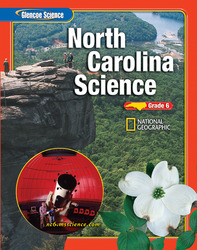1.
A) near a streambed B) in the desert C) areas with steep cliffs D) on the prairie 2.
A) large pieces of glacier sediment B) grooves left in the land from a glacier C) small pieces of glacier sediment D) a mixture of different-sized glacier sediment 3.
A) mass movement B) soil formation C) erosion from wind D) deposition 4.
A) are made of gravel B) move across the land C) stay perfectly still D) are pushed out of the land by volcanic forces 5.
A) the type of material that is moved B) the distance over which the material is moved C) the speed at which the movement occurs D) the direction along a slope that the movement occurs 6.
A) desert B) beach C) forest D) plowed fields 7.
A) sandstorm B) dust storm C) gravel storm D) tornado 8.
A) largest B) smallest C) medium-sized D) All are dropped at the same time. 9.
A) Wind only moves sediment over small areas. B) Wind is not strong. C) Wind does not shape the land. D) Wind doesn't move heavy objects. 10.
A) valley B) flat C) smooth D) continental 11.
A) wind B) mountain building C) glacial deposits D) deposits from streams 12.
A) gravel B) sand C) dust D) loess 13.
A) It has no effect whatsoever. B) It resists erosion. C) It speeds erosion up. D) It increases the possibility of mass movement. 14.
A) 4.6 billion years ago B) about 1,800 C) about 180,000 years ago D) about 18,000 years ago 15.
A) nuclear B) electrical C) magnetic D) gravity 16.
A) flat B) V-shaped C) U-shaped D) streambed 17.
A) when wind erosion moves large objects B) when rocks, gravel, and sand are moved by a glacier C) when a glacier pulls a tree from its roots D) when water in a stream causes rocks to move downhill 18.
A) They loosen soil. B) They lift up sediment. C) They block wind from the soil. D) They hold sediment into place. 19.
A) Sediment falls off of a surface on its own. B) Sediment is blown off a surface from wind. C) Wind-blown sediment strikes a surface. D) Wind blows large chunks of rock off a surface. 20.
A) Florida B) Ohio C) Hawaii D) California














